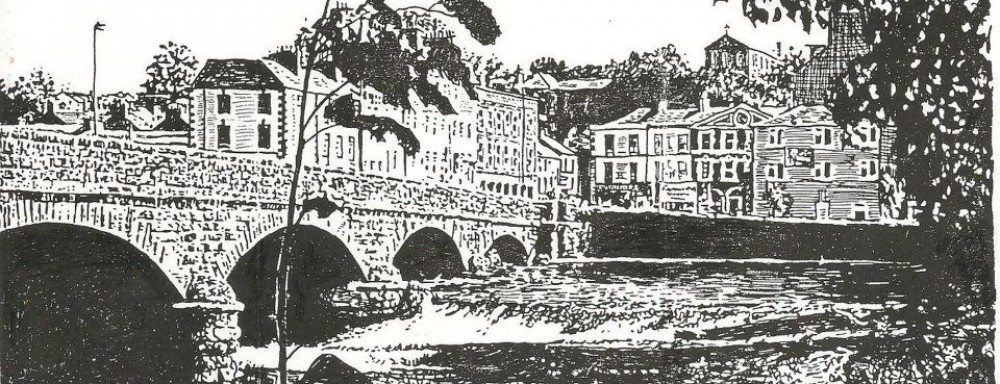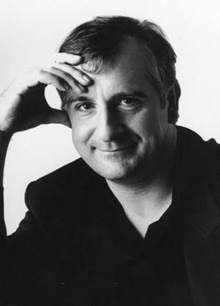“I think he done you proud and Her Majesty loved him. I don’t understand what you was saying earlier that he’s a bit of a figure of fun.”
“Ah, look sorry, I suppose I shouldn’t have said that. He’s not, not really. Ah, it’s just, ah, he can be a bit airy-fairy, d’you know? But I voted for him and he was brilliant with the Queen alright. I suppose it’s just… we take him for granted because he’s been around forever, you know?”
“And has he always been the premier?”
“What? No, no, we only elected him President a couple of years ago but he’s always been there, d’you know? He’s always been the Minister for the Arts, and the Minister for Irish as well, it seems like even when his lot weren’t even in power. And I suppose ’twas only to see him beside the Queen, as an equal, I was glad ’twas him we elected.”
“We-e-ell… as a loyal subject of Her Majesty, I couldn’t agree that anyone’s her equal but I take your point. That said, here, he is tiny, though, ain’t he?”
“So’s the Queen.”
“Yeah, but she’s the bloody Queen, mate!
“Another pint?”
“I will, please. Cheers.”
I overheard that on Friday night, just as President and Sabina Higgins were settling back into Áras an Uachtaráin for a well-earned rest and, as Philip Nolan teased on the wireless, the President’s accent was settling back to normal too.
I was struck during the Irish Presidential Election of 2011, (that never-ending war that those of us on Twitter still call, in hushed and traumatised tones, #Aras11,) that for all the touchy-feely talk of inspiration and personification from all seven candidates, for all the Celtic mist and the Enya backing tracks, the only ones who actually understood the job for which they were applying, were the three political lifers.
Mary Davis? She rose without a trace but my goodness wasn’t she on a lot of Quangos? She talked a good fight about volunteerism but it turned out she had been paid rather a lot of money for her own volunteering.
Dana? No. Just no. Even before that whole thing with the family and the attempted assassination by, er, a burst tyre, just no.
Martin McGuinness? He did a good bit to sanitise Sinn Fein’s image down here in Mexico but he never really was a runner and I always got the impression that he knew that. He was a minesweeper for the Shinners. He also was at least instrumental in the downfall of The Man Who Should Have Been King.
Yes. Seán Gallagher. Oh Lord God. A man who was so Fianna Fáil that he wasn’t even in Fianna Fáil and if you’re not Fianna Fáil yourself well then neither is he but if you are Fianna Fáil well shur you know yourself.
Days before the election, he was the serious favourite to be our ninth president. He was on the telly so he was and apparently he was going to be some class of an entrepreneur in the Áras as well and give us all jobs. Or something.
He would, like Old Man Willikers in Scooby Doo, have gotten away with it too, if not for, at least at first, Martin McGuinness. The only candidate with actual previous experience as the head of an army, McGuinness exposed Gallagher as a Fianna Fáil bag-man on live TV. As Ken Curtin tweeted at the time, “General Tom Barry himself would have been proud of that ambush”.
I still think, though, the real damage was done by Gallagher himself in his ill-tempered reaction to Glenna Lynch‘s questions. The mask really slipped there.
Then there was the “fake” tweet. I remain convinced it might have been a plausibly-deniable tweet but I think it came from exactly where Pat Kenny thought it did. Anyway, let’s not keep going on about it. Like Sean Gallagher is.
Which leaves, as I said, the three political lifers.
Fine Gael, against Taoiseach Enda Kenny’s wishes, ran a veteran candidate so grey and charmless that my mind slides off the subject and I’m thinking now of a really great episode of Doctor Who. Sorry. Fine Gael. Right. #Aras11. Yes. The Fine Gael candidate. For the presidency. The really great thing, though, is that the writer, Steven Moffat, twists the whole idea of narrative and leaves the viewer, like Carey Mulligan’s protagonist, trying to reassemble the brilliantly fractured plotline. Despite the terrifying monsters, there’s a real joy to this story.
Sorry, what?
I would have voted for David Norris. I think he’s a great man and a patriot. I think if not for him, there is a good chance that homosexuality might still be a crime here or at least would have remained a crime for much longer. He lost my vote though at “classic paedophilia” when, as the late Christine Buckley noted, he seemed momentarily and utterly uncharacteristically blinded (I think possibly by loyalty, possibly by love) to the suffering of victims of abuse.
No, I think that given a choice between a man who had no personality, and a man who had way too much personality, we made the right decision when we elected Michael D. Higgins by over a million votes. And I’ve just realised that I’ve indirectly described my president as Goldilocks. Which is, I’m pretty sure, treason.
A man who was always there, even though we might not have really noticed, even though we might have laughed sometimes at his excesses of pomposity and flights of oratorical fancy but a great man who always remained a tireless champion of the underdog and also a kind and generous ambassador for the very best of Ireland.
A small man who makes a whole Nation a whole lot taller. And a man who always, to quote that Englishman from earlier, done us proud.


 Last month, my caricature of Vincent Browne, signed by the man himself, sold for €950 at the Cork Simon Ball.
Last month, my caricature of Vincent Browne, signed by the man himself, sold for €950 at the Cork Simon Ball. 


